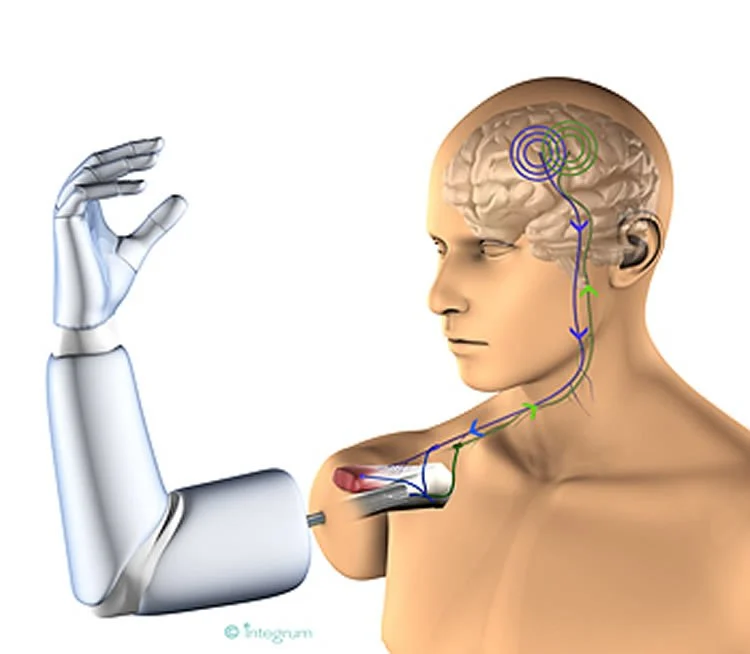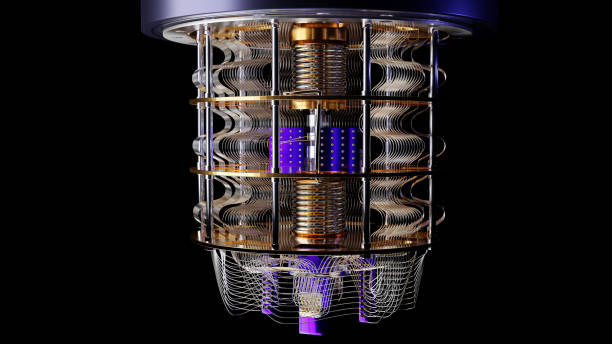For as long as human beings have lived with injury, loss, and physical limitation, there has been the dream of restoring what was lost. Ancient myths tell of gods and heroes who replaced missing limbs with weapons of gold or arms of stone. Medieval knights strapped crude iron hooks to their stumps and sailors carved wooden legs to regain mobility. Yet these were always shadows of what was gone—stiff replacements that mimicked form but not the astonishing function of the human body.
The human hand, for example, is one of evolution’s masterpieces. It can grip the weight of a hammer, turn the page of a fragile book, or trace the outline of a loved one’s face. To lose such ability is not simply to lose a tool—it is to lose a part of one’s identity. For centuries, prosthetics were little more than symbols of survival, not restoration. But science has begun to shift that ancient equation.
We now stand at the edge of a frontier where prosthetics are no longer passive objects but living extensions of thought. The once-fantastical idea that a person could move an artificial arm or leg by willpower alone, as naturally as moving flesh and bone, is no longer confined to science fiction. The question today is not whether mind-controlled prosthetics could become reality, but how soon, and how deeply, they will transform human life.
The Brain’s Electric Symphony
To understand how thought might control a machine, we must first peer into the brain’s own language. Every time you wiggle your finger, walk across a room, or even imagine moving, billions of neurons fire in patterns of tiny electrical impulses. These signals travel across networks like lightning arcing through a vast city of wires. Muscles contract, joints bend, and movement emerges, seamless and automatic.
The wonder is that these electrical whispers can be read. Electroencephalography (EEG), developed in the early 20th century, showed that brainwaves could be recorded from electrodes placed on the scalp. More invasive techniques, involving electrodes implanted within the brain itself, can measure activity at the level of individual neurons. Each thought of movement leaves its fingerprint in this electrical symphony. If technology can interpret those signals, it can translate intention into mechanical action.
For decades, neuroscientists asked: could the brain’s electric code be used to drive machines? The answer slowly began to reveal itself through experiments where monkeys learned to control cursors on computer screens using nothing but thought. Electrodes picked up the patterns of brain activity, and computers translated them into motion. The leap from cursor to prosthetic limb was not far.
First Steps into the Future
In the early 2000s, a patient named Matthew Nagle, paralyzed from the neck down, became one of the first humans to test a direct brain–machine interface. A tiny sensor implanted in his motor cortex allowed him to move a cursor on a computer, open emails, and even control a robotic arm with thought alone. It was crude, limited, and required invasive surgery, but it proved what once seemed impossible: that the human brain could directly control an external device.
Since then, progress has been astonishing. Research teams across the world have refined brain–machine interfaces (BMIs) into more powerful, more accurate, and more flexible systems. Paralyzed patients have used robotic arms to shake hands, feed themselves, and even drink from a cup—all through mental intention. One patient, quadriplegic for years, reached out with a robotic arm to clink a glass of beer in a celebratory toast. The moment was not just symbolic; it was a glimpse of what restoration truly means.
Non-invasive methods have also advanced. EEG caps, which measure electrical signals through the scalp, have been used to control simple prosthetic hands. Though less precise than implanted electrodes, they offer safer and more accessible options. As algorithms become better at interpreting noisy brain signals, these external systems inch closer to practical application.
Teaching Metal to Feel
Yet motion is only half of what makes a limb part of ourselves. Touch, pressure, and texture are equally vital. Without feedback, even a natural limb becomes clumsy. Imagine trying to button a shirt or hold an egg without feeling your fingers—every movement becomes guesswork.
Scientists realized that to make prosthetics truly lifelike, they needed to restore sensation. The nervous system, remarkably, can be rewired. Surgeons have developed techniques like targeted muscle reinnervation, in which nerves from an amputated limb are rerouted to other muscles in the body. When a prosthetic hand is attached, sensors can detect activity in those muscles and translate it into motion. Even more astonishingly, when the prosthetic delivers small electrical pulses back through the reinnervated nerves, the brain can perceive touch, warmth, or pressure.
In one experiment, a man using such a system was blindfolded and asked to pick up objects. With sensory feedback, he could feel the difference between hard and soft, light and heavy. The prosthetic ceased to be an object and became part of his body schema—integrated into his sense of self.
The Challenge of the Human Brain
Despite breathtaking progress, mind-controlled prosthetics face immense challenges. The brain is the most complex structure known in the universe. Each person’s neural wiring is unique, and the signals produced are noisy, overlapping, and ever-changing. To decode intention from this chaotic orchestra is a task of enormous difficulty.
Implanted electrodes offer clarity but at a cost: invasive surgery, risk of infection, and gradual decline in signal quality as scar tissue forms around the electrodes. Non-invasive systems are safer but struggle with precision, as scalp electrodes must pick up faint signals through layers of bone and tissue.
Artificial intelligence has become a crucial ally. Machine learning algorithms can adapt to a user’s brain patterns, learning to interpret the electrical signatures of specific intentions. Over time, the system becomes more accurate, as if the machine itself learns the individual’s “neural accent.” Yet this requires massive amounts of data, constant recalibration, and computing power.
Another challenge lies in durability. Natural limbs never need charging or software updates, but prosthetics rely on batteries, sensors, and fragile electronics. For widespread adoption, they must become robust, affordable, and simple enough for everyday use outside of laboratories.
From Laboratory to Living Room
One of the most promising developments is the shrinking of technology. What once required bulky computers and hospital labs is slowly becoming wearable, portable, and even wireless. Startups and research groups are designing EEG headbands, implantable chips, and prosthetic limbs that can be controlled through smartphones. As the hardware becomes smaller and the software smarter, mind-controlled prosthetics edge closer to integration into daily life.
Military research has also accelerated the field. Agencies such as DARPA have funded ambitious projects to create advanced prosthetics for wounded veterans. Some of the world’s most sophisticated robotic arms—capable of delicate, multi-fingered motion—were born from these efforts. Veterans who once faced a lifetime of limitation are now testing technologies that were unimaginable a generation ago.
Beyond the Human Limit
A profound question emerges as these technologies advance: should prosthetics simply restore what was lost, or could they surpass natural human ability? A prosthetic hand could, in theory, be designed with superhuman grip strength, the ability to rotate endlessly, or to interface directly with digital systems. An artificial eye might one day perceive wavelengths invisible to the human retina.
If the brain can command machines, then the boundary between healing and enhancement begins to blur. Philosophers and ethicists debate what it means to be human in such a future. Would a person with prosthetic limbs that outperform biological ones be more than human, or simply human in a new form? History suggests that as technology evolves, so too does our definition of normalcy. What once seemed alien becomes commonplace, just as glasses, pacemakers, and smartphones have become extensions of ourselves.
The Emotional Revolution
At the heart of mind-controlled prosthetics lies not just science but humanity. To move a hand again after years of stillness, to feel the warmth of another’s touch, to tie shoelaces or cradle a child—these are moments of profound emotional power. They restore not just function but dignity, independence, and identity.
Patients often describe the first time they control a prosthetic with their mind as a moment of rebirth. Tears flow, families embrace, and the sterile laboratory becomes a theater of human triumph. These are not simply engineering milestones; they are victories of the human spirit.
A Future Within Reach
The path ahead remains difficult. Challenges of cost, accessibility, long-term safety, and ethical boundaries must be navigated. Yet the trajectory is clear. Each year, research brings us closer to prosthetics that are indistinguishable, in function and feeling, from natural limbs.
Could mind-controlled prosthetics become reality? In truth, they already have, in research labs and in the lives of pioneering patients. The next step is to bring them from the realm of the extraordinary to the everyday, where anyone who needs them can access them.
When that future arrives, the word “disabled” may lose much of its meaning. Humanity will have entered a new era where thought and machine are seamlessly united, where loss can be met with restoration, and where the boundaries of what it means to be human are rewritten not by limitation, but by imagination.
Albert Einstein once said, “Imagination is more important than knowledge. For knowledge is limited, whereas imagination encircles the world.” The dream of mind-controlled prosthetics is imagination made real—a bridge between brain and machine, between loss and hope, between what we are and what we can become.
And as the first patients reach out with thought-driven arms to grasp the future, we begin to realize that this is not just the story of prosthetics. It is the story of humanity itself, daring always to rebuild, to extend, and to transcend.






